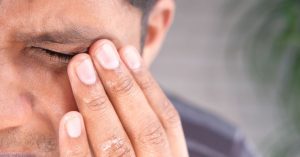Call for your appointment today 914-666-4665 | Mt. Kisco, New York

“Clinically, PTLDS is largely a diagnosis of exclusion, requiring documentation of prior Lyme disease, appropriate treatment, and onset of unexplained, subjective symptoms within six months after a Lyme disease diagnosis that persist for at least six months after completion of antibiotic treatment,” writes Moon from Johns Hopkins Bloomberg School of Public Health. [4]
Many patients remain ill with PTLDS, says Moon. “Up to 20% of cases in treatment trials experience persistent subjective symptoms after antibiotic treatment, called post-treatment Lyme disease syndrome (PTLDS),” writes Moon, citing a 2010 review by Marques. [5]
Researchers examined 9,657 cases of Lyme disease in central and northeastern Pennsylvania to determine the incidence of illness consistent with PTLDS.
They analyzed electronic medical records from Geisinger, an integrated health system.
Moon and colleagues found the proportion of Lyme disease cases consistent with PTLDS was “22.8% (n = 1556) in all cases and 21.6% (n = 253) in positive test cases.”
The high risk of PTLDS was lower than a 34.4% incidence seen in a nation-wide insurance claims study by Adrion in 2015. [6]
“But this study,” writes Moon, “did not exclude pre-existing diagnoses and used a broader definition of PTLDS.”
The risk of PTLDS was 9% higher in Lyme disease cases than in controls.
There is no evidence that the doctors at Geisinger evaluated whether their patients might have suffered from a persistent tick-borne infection.
Author’s note: I do not use the term PTLDS. The term implies that there is a test to prove a tick-borne infection has cleared. There is not. I remain concerned that a doctor may not look for a persistent infection once their patient has been diagnosed with PTLDS.
Related Articles:
Long-term problems for some Lyme neuroborreliosis patients
Single dose of doxycycline for Lyme disease leads to poor outcome for 61-year-old man
Case report: Persistent pain and fatigue after treatment for Lyme disease
References:
- Shadick NA, Phillips CB, Logigian EL, et al. The long-term clinical outcomes of Lyme disease. A population-based retrospective cohort study. Ann Intern Med. 1994;121(8):560-567.
- Asch ES, Bujak DI, Weiss M, Peterson MG, Weinstein A. Lyme disease: an infectious and postinfectious syndrome. J Rheumatol. 1994;21(3):454-461.
- Wormser GP, Dattwyler RJ, Shapiro ED, et al. The clinical assessment, treatment, and prevention of lyme disease, human granulocytic anaplasmosis, and babesiosis: clinical practice guidelines by the Infectious Diseases Society of America. Clin Infect Dis. 2006;43(9):1089-1134.
- Moon KA, Pollak J, Hirsch AG, et al. Epidemiology of Lyme disease in Pennsylvania 2006-2014 using electronic health records. Ticks Tick Borne Dis. 2018.
- Marques AR. Lyme disease: a review. Curr Allergy Asthma Rep. 2010;10(1):13-20.
- Adrion ER, Aucott J, Lemke KW, Weiner JP. Health care costs, utilization and patterns of care following Lyme disease. PLoS One. 2015;10(2):e0116767.




I agree that more than 3 weeks of antibiotics is required to kill the bacteria. I have treated Lyme disease as Dr. Richard Horowitz teaches, and with good results….and I don’t understand why, when medical professionals treat other infectious diseases like TB and tertiary syphilis, for a year, and more… why the Wormser and his colleagues persist in insisting their fallacy is truth. Blessings on Dr. Cameron for shining the light and speaking out the truth.